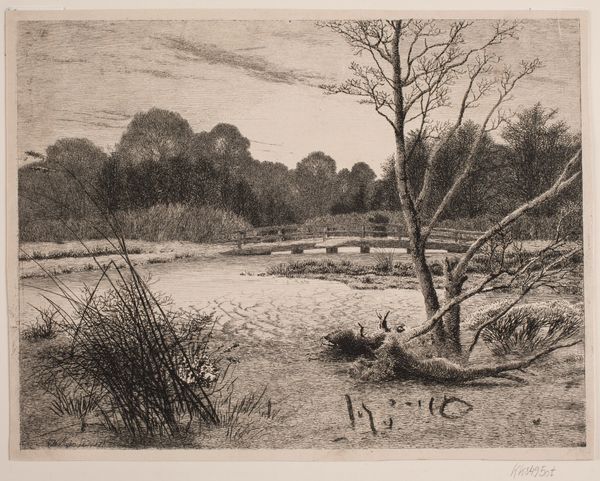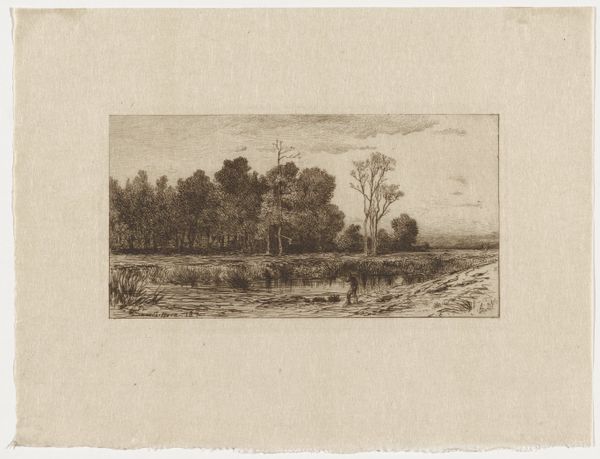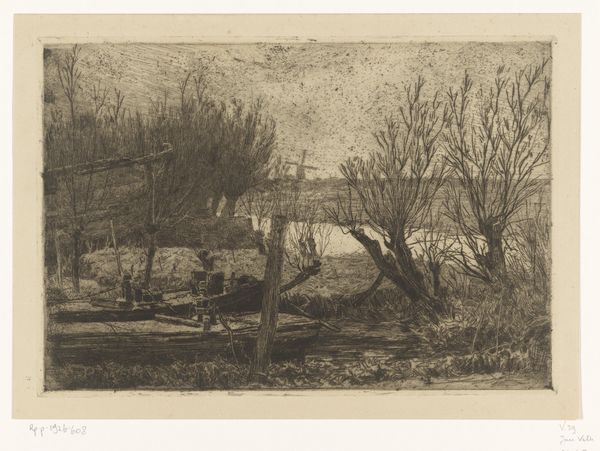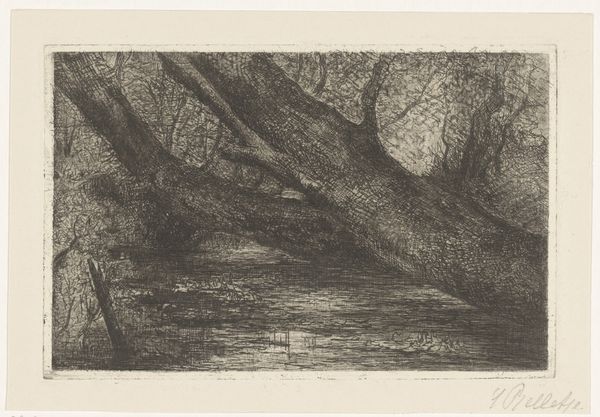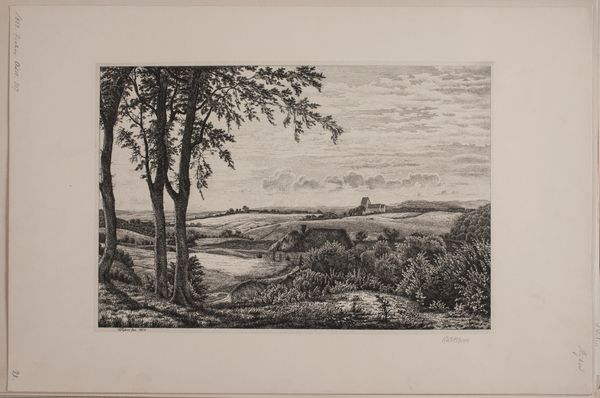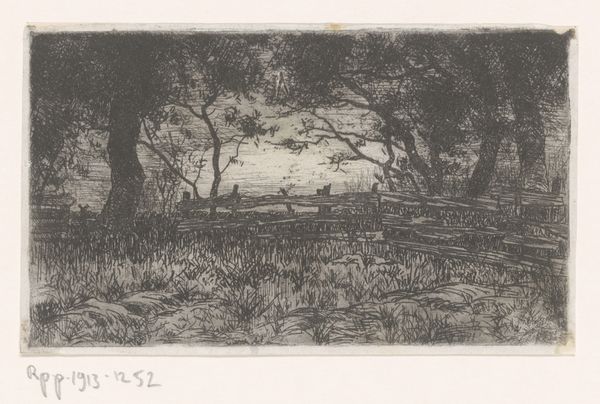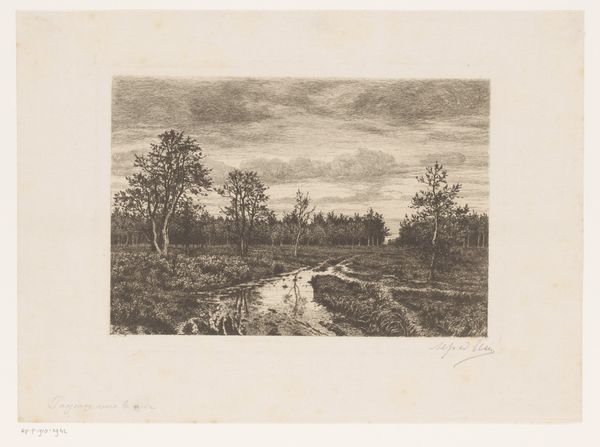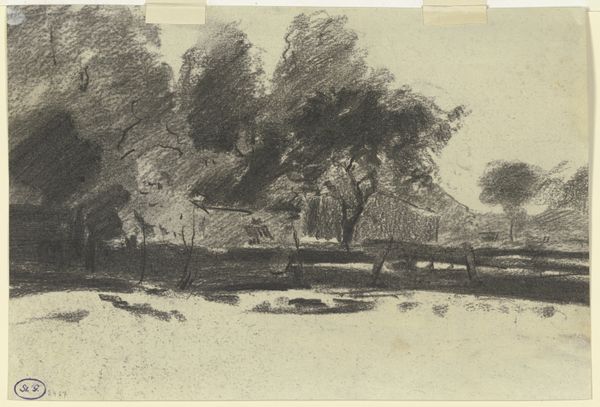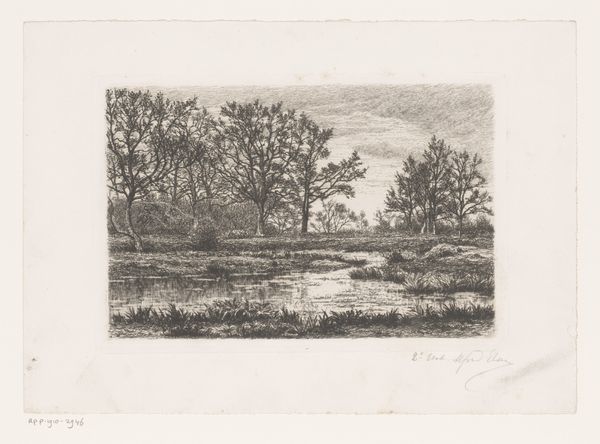
drawing, print, etching, ink
#
drawing
# print
#
impressionism
#
etching
#
landscape
#
ink
#
tonal art
Dimensions: 240 mm (height) x 313 mm (width) (bladmaal)
Editor: This etching, "Sunset in a Forest" by Vilhelm Kyhn, dating to 1885, is just mesmerizing! It is a beautifully rendered landscape scene in ink, seemingly still and quiet. What story does this piece tell you? Curator: It reflects the burgeoning national romanticism in 19th-century Denmark, positioning the local landscape as central to cultural identity. Artists like Kyhn championed the Danish countryside as a repository of authentic values. Note how the composition guides your eye not to grand monuments, but towards the intimate details of the forest: the texture of the trees, the stillness of the water. Does that choice resonate with any broader social movement of the time, do you think? Editor: Hmm, it seems like there is an emphasis on everyday life? Perhaps connecting to the value of ordinary people, elevating the common man over royalty? Curator: Precisely! There's an interesting connection to the growing democratic sentiments. Landscape art wasn't just about pretty pictures; it was about claiming a national space, accessible to all. Consider the location of the artwork now. That is also crucial: What kind of audiences had access to this piece and similar works at SMK? Editor: Because it’s in a public museum, does that mean Kyhn was trying to make art more democratic, by letting ordinary citizens experience these landscapes themselves? Curator: Yes! Artists hoped their art would inspire patriotism and pride and function as a place for citizens to explore a common identity. Museums reinforced this. This work really makes me think about art's ability to shape social perceptions. Editor: So the quietness of this scene actually holds a deeper social meaning. I'll never look at landscapes the same way. Curator: Exactly. Kyhn shows us that even the quietest art speaks volumes about the values of its time.
Comments
No comments
Be the first to comment and join the conversation on the ultimate creative platform.

